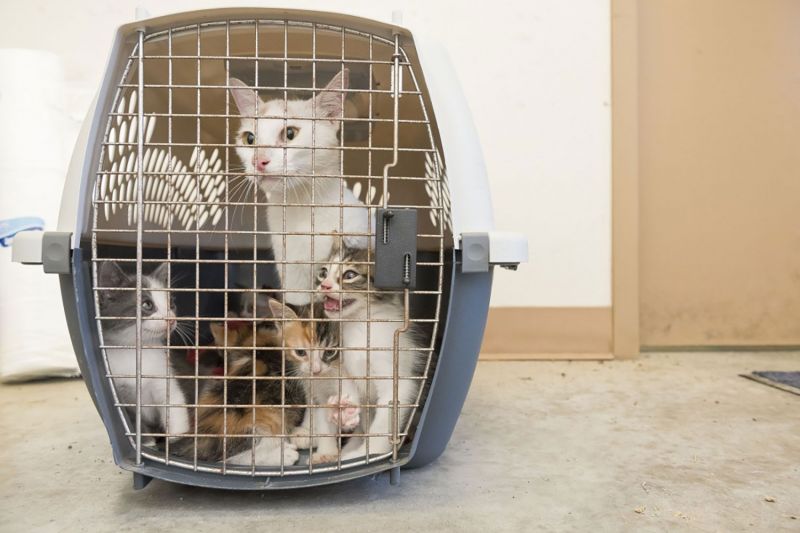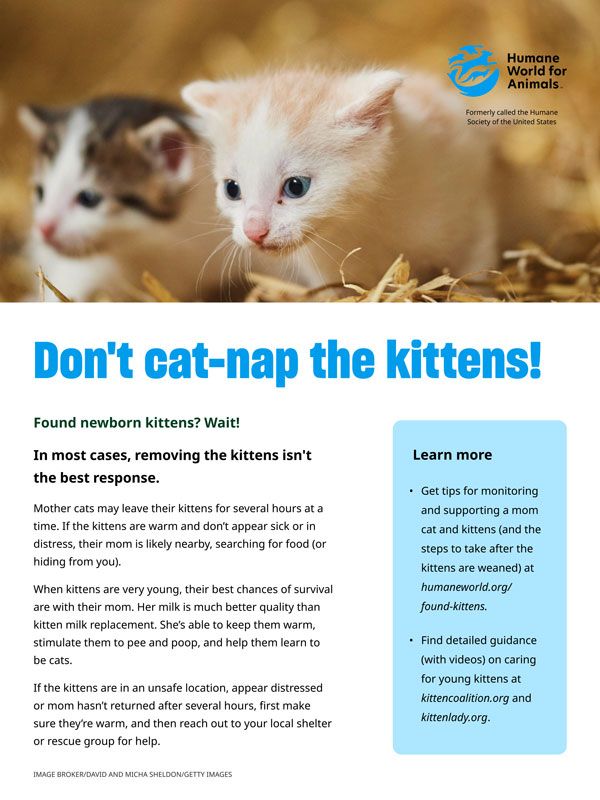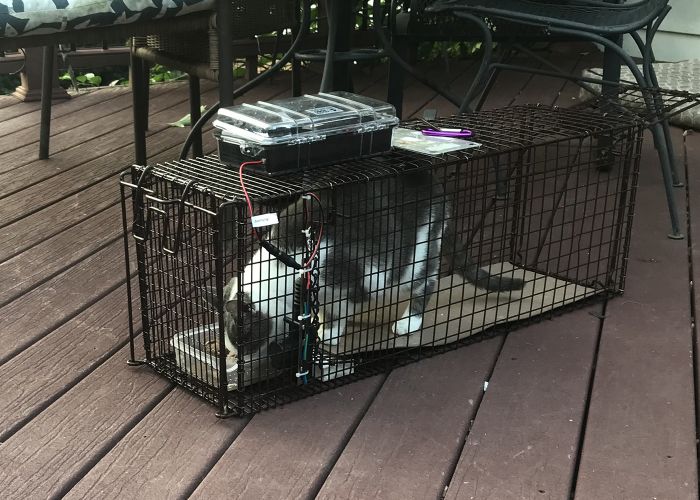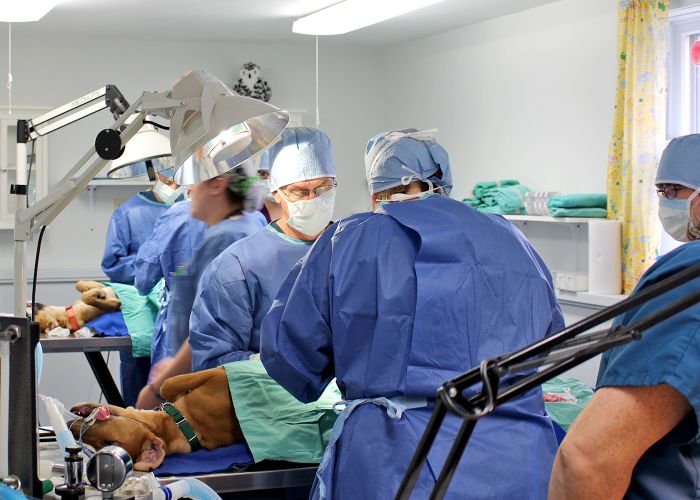Mother knows best
Shelters spread a lifesaving message about underage kittens

Susan Spaulding was living in Texas and volunteering at the Hill Country Animal League’s thrift store when someone brought in a box of 13 unweaned kittens. After learning that the kittens would be immediately euthanized at the shelter, Spaulding made a life changing decision: She took the kittens home and taught herself how to care for “bottle-babies.”
All survived, and Spaulding became known as the person to call for help with young kittens. Fourteen years later, she was still fostering kittens and had co-founded the organization that would evolve into the National Kitten Coalition. By then, her eyes were opened to a harsh reality: Unweaned kittens were fragile and required round-the-clock care; she and her network of foster volunteers couldn’t take them all; and shelters had few good options for kittens too young to eat on their own or too young for adoption.
“The challenge with shelters is it’s time sensitive,” says Spaulding. “They can’t leave them overnight without care, and most shelters don’t have 24/7 care. If they don’t have someone who can come get them almost immediately, then what do they do? It’s either euthanize them or leaving them overnight. I know shelter directors personally, and it’s one of the hardest decisions they have to make. It’s heartbreaking.”
In the 25 years since she raised that first group of bottle-babies, Spaulding has seen a lot of progress. Robust trap-neuter-return efforts are reducing the numbers of kittens born outside, and expansive foster care programs are alleviating the burden on shelters. Some organizations, like Miami-Dade County Animal Services and the Hillsborough County Pet Resource Center in Tampa, Florida, provide kitten finders with the supplies and information they need to raise the youngsters until adoption age. Meanwhile, training programs and online resources by the National Kitten Coalition and other nonprofits are teaching shelters, rescue groups and laypeople to better meet the needs of this vulnerable population.
Yet kittens are still one of the groups of animals at highest risk for euthanasia, she says. Their numbers and their needs are simply too great.
“Even if you have a bunch of foster homes, you can easily get slammed during kitten season with neonates and not have enough fosters available,” says Danielle Bays, senior analyst of cat protection and policy at Humane World for Animals.
Part of the solution lies in that old standby: public education.
Over the years, the animal welfare field has done a good job of spreading the message that people who find animals outside should bring them to the shelter, says Bays. But when it comes to underage kittens, that’s often the wrong choice.
Just like mother rabbits, squirrels, deer and other wildlife, mom cats leave their babies unattended for hours each day. But every year, when breeding season begins, both wildlife rehabilitation facilities and shelters are inundated with fragile neonates brought in by well-intentioned people who mistakenly assumed they were abandoned by their moms.
Sadly, many of these “rescued” animals don’t survive. Even with top-notch care by humans, neonatal kittens can suffer high mortality rates, Bays says. “Mom is best suited to provide the best care for them. Mom cat milk is much better quality than kitten milk replacement. She’s able to keep them warm, stimulate them to pee and poop, and help them learn to be cats.”
That’s why more shelters and feline advocacy organizations are mirroring the tactics of wildlife rehabilitation organizations, using graphics, flyers and other forms of outreach to turn people’s good intentions into informed decisions.
“Don’t Kit-Nap Kittens!” urges a short video and decision-making flowchart by the Arizona Humane Society, which has a web page counseling kitten finders to adopt a wait-and-watch approach, giving the mom cat time to return to care for her young. The Jacksonville Humane Society in Florida, Texas Litter Control in the greater Houston area and other organizations are spreading the same message, teaching their communities how to distinguish kittens who are truly abandoned from those best left alone until they’re older.
“People need to understand that the moms do leave,” Spaulding says. It’s something she repeats to dozens of callers each week during the spring and summer months, when breeding season peaks. “If the kittens are fat, happy, clean and sleeping, you need to wait,” she tells them.
She then counsels callers through the next steps—providing mom with high-calorie food; waiting until the kittens are weaned before capturing them for taming and adoption (or if that’s not feasible, waiting until they’re old enough for TNR); and most important, ensuring that mom is spayed to prevent future litters.
In this way, Spaulding and others are working to increase kittens’ survival chances and conserve resources for those who actually need rescuing.
Bays was reminded of the wisdom of this strategy not long ago when a squirrel nest fell out of a tree in her neighborhood. The baby squirrels inside were “tiny hairless things,” she says, and the knee-jerk reaction among her concerned neighbors was to deliver them to the closest wildlife rehabilitation center. Instead, staff at the wildlife center counseled them to wait, and sure enough, the mama squirrel came back and moved her babies to a safe secondary home. “Moms are really good,” Bays says.
Document








